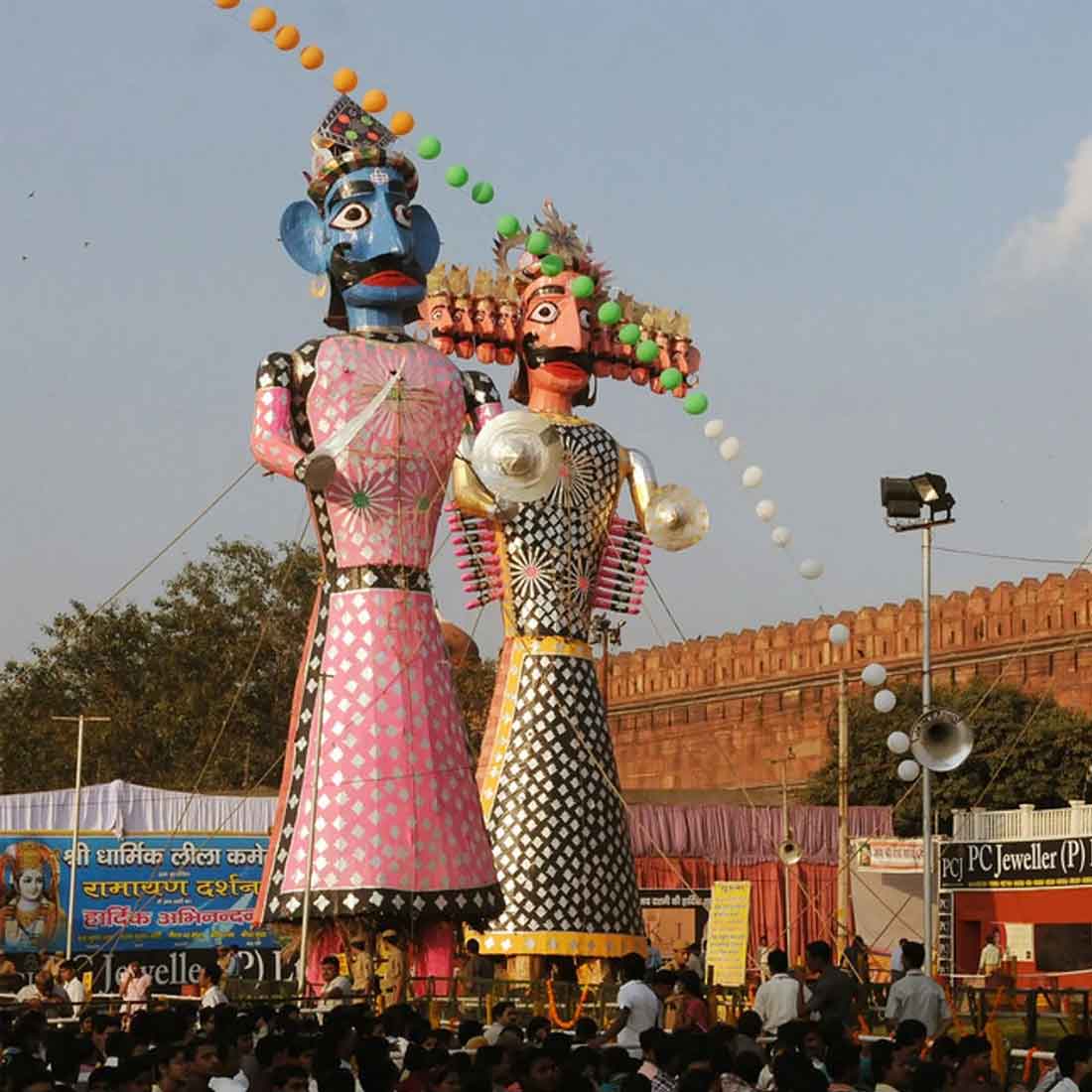Dussehra is one of the most celebrated festivals among the Hindus all across India. It is observed in different names and different forms among different communities all over the country. Most popularly, it is observed as the tenth day of Navratri or Durga Puja, which also marks the victory of Lord Rama over Ravana according to the tales of the epic Ramayana.
Every year on the auspicious occasion of Dussehra, people fill every corner of their homes with candles, diyas, and flower garlands. Households are clean and whitewashed to make sure that no corner holds back any negative energy. In the evening, families welcome the guests, exchange greetings, and spend quality time together over presents and meals. Sweets are served, crackers are burst, and there is an overall essence of joyousness in the atmosphere.
Celebration in parts of India
Every year, the festival takes place in Hindu calendar month of Ashwin, which is either September or October in the Gregorian calendar. It is celebrated in different manners across the stretch of our country.
1. Bengal
Among the Bengalis, Dussehra is popular as Vijaya Dashami. It is the tenth day of Durga Puja and the Divine Goddess of Femininity bids us farewell and goes back to her home at Kailash. The day is celebrated the day by immersing the giant idols of Durga along with her children Lakshmi, Saraswati, Karthik, and Ganesh in the Holy River Ganges after nine days of worship. People attend processions by chanting mantras, singing, dancing, and celebrating. Bengali women celebrate with ‘sindoor khela’ which means ‘playing with vermillion, where they put the red powder on the foreheads and cheeks of other women. But before that the Goddess herself is bid adieu to and prepared for her journey back home in the same way with sindoor.
2. North and central India
At places of northern and central states of India, Dussehra has a different festive mood. Here, it marks the end of Navratri. It depicts the end of the battle between Lord Rama and Ravana, resulting in the former’s victory. The day is celebrated by enacting the life story of Rama in Ramleela and huge effigies of ten-headed Ravana, his son Meghnad, and his brother Kumbhkarna are burnt.
Although not as popular as the Ramayana story, Dussehra has ties with the other epic Mahabharata as well. It marks the day which ended the 12-year exile of the Pandavas. On this day, they went to retrieve their weapons from the Shami tree where they hid their weapons before taking disguise for the last year. In only a few days they took to the battleground at Kurukshetra to face their cousins, the Kauravas, and their victory marks the day of Diwali two weeks later.
3. Goa
In parts of Goa, they know Dussehra as Dasro, in the Konkani language. It marks Goddess Durga’s victory defeating the demon Mahisasura. A lot of rituals take place on that day in Goa. They decorate the villages with sacred umbrellas which symbolize village deities. The dance form of Taranga plays a very important role in the festival and people perform them in temples and communities.
4. Marwar Region
In the Marwar region spreading over Gujarat and Rajasthan, the end of Navratri is celebrated with Dandiya dance. Dandiya Raas involves dancing in groups with partners in colourful clothes and with sticks. The dance form is traditionally called Garba. They decorate houses beautifully with lights, candles, and diyas. Beautiful Rangolis are made with powdered dyes to deck the front of houses, puja rooms, pandals, and streets. Dussehra is a festival that lets in the good in life; it radiates hope, love, and togetherness for everybody.
5. South India
Mysore has one of the grandest celebrations of Dussehra, where decorated elephants are brought out in processions. The Goddess worshipped is Chamundeshwari, yet another avatar of Adi Shakti, and she is placed in a golden palanquin on top of the leading elephant.
6. Nepal and East Himalayan states
The Hindu communities of Nepal and some of the East Himalayan states like Sikkim, Assam, and the Gorkha region of West Bengal celebrate it as Dashain. However, the nature of celebration is more or less the same, where the Ultimate Goddess is worshipped, communal processions are held, gifts are exchanged, and community gatherings are conducted.
Dussehra is celebrated in many different ways all over the country. There are differences in customs and rituals in every region. But at its core, Dussehra is a victory of good over evil and light over darkness. The festival brings joy, happiness, and unity among people, irrespective of the caste, community, and age.

